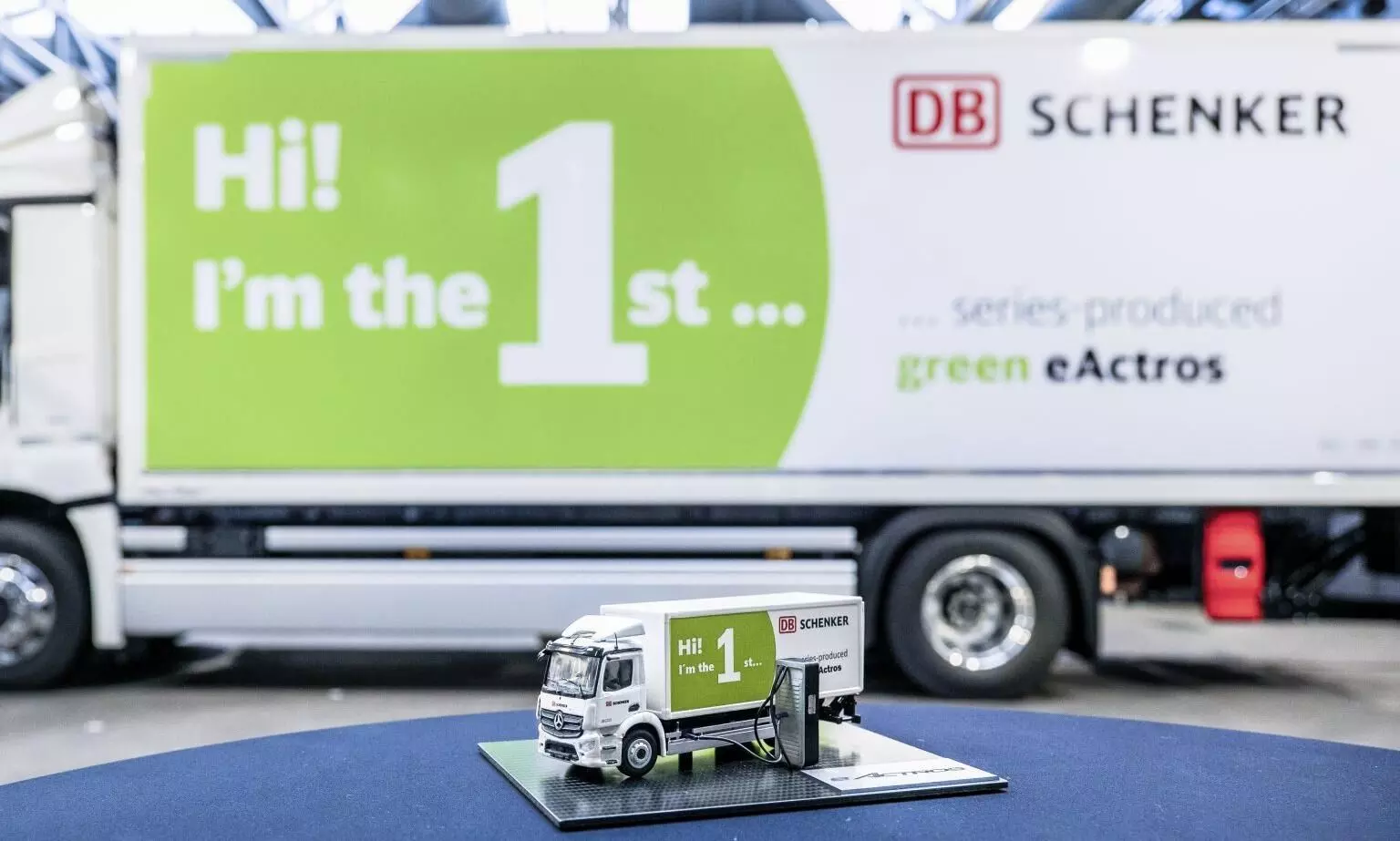
DB Schenker first to take delivery of 19 tonne Mercedes-Benz eActros
The battery system in the eActros 300 consists of three battery packs that each has a usable capacity of 7 kWh.

Schenker today became the first customer worldwide to take delivery of the battery-electric Mercedes-Benz eActros as a series-production vehicle and will be using the 19-tonne truck for general cargo deliveries in urban logistics operations.
"DB Schenker is already able to make CO2-free general cargo deliveries from more than 60 locations across Europe. With the eActros, DB Schenker is adding another vehicle model to its sustainable fleet and taking another important step toward climate-neutral logistics," reads the release.
"As a pioneer in the field of innovative transport solutions, and with a Group-wide fleet of more than 30,000 vehicles, we at DB Schenker have set ourselves the goal of becoming the world's leading provider of green logistics services," says Wolfgang Janda, Executive Vice President, Head of Network & Line Haul Management at DB Schenker. "After all, our success is based not only on our reliable logistics services but also on our social commitment and the contribution we make to environmental protection. To do this, you need to have the right mix of vehicles with alternative drive systems. The light FUSO eCanter truck from Daimler Truck has already proved its suitability for everyday use at DB Schenker facilities in several cities, and now we're excited to see how the eActros will perform."
Karin Rådström, Member of the Board of Management of Daimler Truck Holding AG, with responsibility for the regions Europe and Latin America and the Mercedes-Benz Truck brand, said, "We worked closely with DB Schenker when we developed the eActros. This also allowed us to directly incorporate feedback from actual operations into the series-production model and the associated services we offer. The eActros is a true Mercedes and the right vehicle for a new sustainable era."
The foundation for the use of the Mercedes Benz eActros was laid back in 2020 when CO2-neutral delivery operations were successfully tested in the center of Leipzig using a pre-series eActros truck. With a range of approximately 200 km, the eActros did a great job by successfully completing all of its daily assignments without having to stop to recharge. The truck's batteries were then charged every night at a DB Schenker charging station. DB Schenker has also been using more than 40 FUSO eCanter trucks for normal daily operations in 11 European countries – including Germany, France, Finland, Italy, and Spain – for more than a year now.
The battery system in the eActros 300 consists of three battery packs that each have an installed capacity of 112 kWh and a usable capacity of approximately 97 kWh.
The technological centerpiece of the electric truck is its drive system consisting of a rigid electric axle with two integrated electric motors and a two-speed transmission. The two liquid-cooled motors generate a continuous output of 330 kW and a peak output of 400 kW. In addition, electrical energy can be recovered through recuperation when driving with care. Here, the energy generated through braking is fed back into the eActros batteries and can then be used at a later time to power the vehicle. The eActros can be charged at stations with a charging power output of up to 160 kW.
The bodies for the Mercedes-Benz eActros models used by DB Schenker are built by SPIER – more specifically, the trucks are outfitted with the SPIER Athlet dry cargo box body in an aeroform design (length: 7,300 mm; height: approx. 2,489 mm). In combination with the roof spoiler, the profile edgings and caps (with a sophisticated aerodynamic design) that run along the entire body reduce the drag coefficient and thus increase the range of the entire truck. The body, which can manage both high payloads and extensive transport volume, is adapted to customers' needs in terms of securing cargo, for example.

